Objects : 12
-
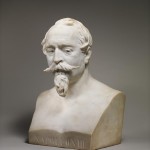 ObjectPosthumous Bust of Napoleon III, 1873-1874, by Jean-Baptiste CarpeauxAfter the fall of the Empire in 1870, the Emperor Napoleon III, in exile in Chislehurst (UK) was in poor health. The sculptor Jean-Baptiste Carpeaux (1827-1875) was summoned in 1872 to create the first sketches for an imperial bust. In the end, Carpeaux arrived after…
ObjectPosthumous Bust of Napoleon III, 1873-1874, by Jean-Baptiste CarpeauxAfter the fall of the Empire in 1870, the Emperor Napoleon III, in exile in Chislehurst (UK) was in poor health. The sculptor Jean-Baptiste Carpeaux (1827-1875) was summoned in 1872 to create the first sketches for an imperial bust. In the end, Carpeaux arrived after… -
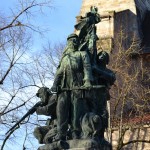 ObjectFigeac Monument dedicated to those who died in the War of 1870: ‘The Heroic death of Captain Pierre-Auguste Anglade’
ObjectFigeac Monument dedicated to those who died in the War of 1870: ‘The Heroic death of Captain Pierre-Auguste Anglade’This war memorial is dedicated to those who died in the War of 1870 [the Franco-Prussian War]. It was erected and revealed to the public on 7 July 1907, at a site donated by the commune of Figeac. The memorial was financed by a subsidy from the Lot département as well as a fundraising campaign initiated by the Société […]
-
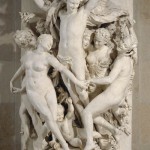 Object / IIe République – 2nd Empire/2nd Republic-2nd Empire‘La Danse’: Carpeaux’s sculpture for the façade of the Opéra Garnier
Object / IIe République – 2nd Empire/2nd Republic-2nd Empire‘La Danse’: Carpeaux’s sculpture for the façade of the Opéra GarnierIn 1861, to many people’s astonishment, the young architect Charles Garnier (1825-1898) won the competition to design a new opera house in Paris. The project was launched by Napoleon III a short while after Orsini’s attack of 14 January 1858, when the latter had attempted to assassinate the Imperial Couple as they arrived for a […]
-
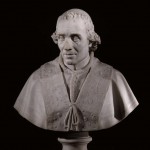 Object / Directoire-Consulat-Ier Empire/Directory-Consulate-1st EmpireBust of Pius VII
Object / Directoire-Consulat-Ier Empire/Directory-Consulate-1st EmpireBust of Pius VIIThis bust of the Pope who consecrated Napoleon I, made by Antonio Canova, is held at the Château de Versailles. The marble likeness echoes the Pope’s brief visit to Louis XIV’s château, on 3 January 1805 (see here an account of the Pope’s visit to Versailles). Pius VII had been invited to Paris by Napoleon to […]
-
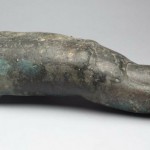 Object / IIe République – 2nd Empire/2nd Republic-2nd EmpireThe Finger of the statue of the Emperor Constantine: from the Campana collection to the Louvre
Object / IIe République – 2nd Empire/2nd Republic-2nd EmpireThe Finger of the statue of the Emperor Constantine: from the Campana collection to the LouvreIn June 2018, the Musée du Louvre issued a press release* informing the general public that they had solved a mystery more than 150 years old. Since 1862, the museum has owned a bronze finger, 38 cm in height, clearly a fragment from the hand of an ancient statue. The only thing we knew about […]
-
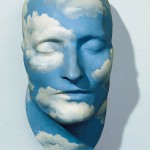 ObjectThe Future of Statues
ObjectThe Future of StatuesMagritte made four versions of this work, “L’Avenir des statues” (‘The Future of Statues’), in the period 1933 to 1937. He took a commercial plaster version of Napoleon’s death mask and painted onto it a deep-blue sky spotted with sunlit clouds. According to David Sylvester, it is only the polish on the plaster and the […]
-
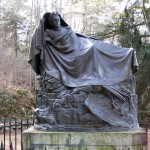 ObjectNapoléon s’éveillant à l’immortalité (Napoleon awakens to immortality)
ObjectNapoléon s’éveillant à l’immortalité (Napoleon awakens to immortality)This bronze – also known as “Le réveil de Napoléon” (Napoleon awakes) – is by the sculptor François Rude and was commissioned in early 1840 by Claude Noisot, a former grenadier-à-pied and captain of the Old Guard. This military man was a faithful devotee of the Emperor, and had participated in the campaigns in Austria […]
-
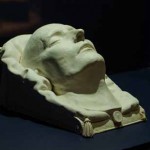 ObjectPlaster death mask of the Emperor Napoleon I, Antommarchi subscription, 1833
ObjectPlaster death mask of the Emperor Napoleon I, Antommarchi subscription, 1833In 1819, the anatomist, Francesco Antommarchi (1789-1838), was sent to St Helena as a doctor. He assisted the British physician Burton, who having found gypsum on the island, was able to take a death mask of the Emperor in several sections. Bertrand and Antommarchi took the central part (eyes, nose, mouth). This original mask, almost […]
-
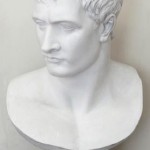 ObjectBust of Napoleon, by Canova
ObjectBust of Napoleon, by CanovaThis plaster bust is one of a series of portraits produced by Canova between 1802 and 1822, each with varying degrees of success. More generally, the bust is also part of a wider collection of inter-connected works, the establishment of the provenance of which however remains to a certain extent inconclusive. These works are still […]
-
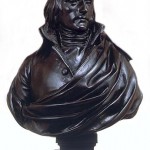 ObjectBust of General Bonaparte
ObjectBust of General BonaparteEffigies of Napoleon became more common after the successes of his first Italian campaign. The meeting between the sculptor Charles-Louis Corbet and the young general can be dated with certainty to sometime between 5 December, 1797 – the day Bonaparte returned to Paris – and 4 May, 1798 – the day he left for Egypt. This […]

